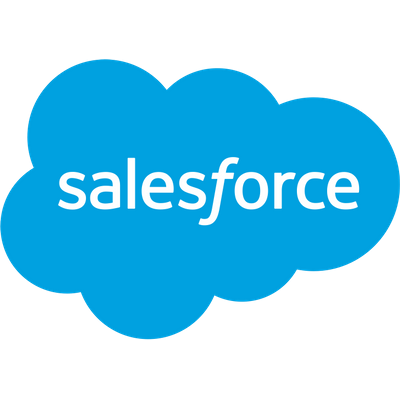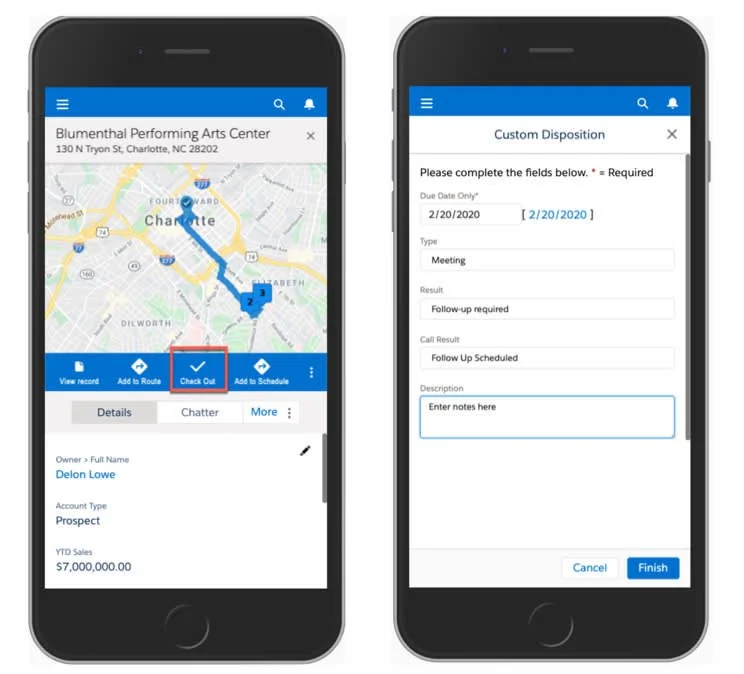Best Practices for Consumer Goods and Retail New Technology Initiatives
It’s no secret that organizations often struggle with adoption of new technology at all levels; from field reps to customer service agents and all the way up to the CEO. It’s important to offer each level of the organization a unique answer to the age-old ‘What’s in it for me?’ question.
This could not be more true in the Consumer Goods and Retail space. We are emerging from the isolation of COVID-19 whereby field teams have been sidelined to their home offices and will now venture back to their pavement-pounding, distance-driving routes. These times of emergence offer an impeccable opportunity for everyone to psychologically ‘rally the troops’ and launch new technology initiatives that can (1) improve field productivity whilst taming the ‘big brother’ stigma, and (2) provide executive visibility into what’s working and where improvements can be made. Let’s look at some of the features in Salesforce Consumer Goods Cloud (CG Cloud) that address these needs and are strategically aligned with the unique concerns of executives, management, and field reps.
Salesforce’s Retail Execution Mobile App for CG Cloud
What is it?
Retail Execution is a specialized app available within Salesforce Mobile offering field reps a step-by-step guide for conducting assessment tasks when visiting a store, such as Promotion Checks, Asset Checks, Planogram Checks, and Inventory Checks.
[Read How to Drive Results by Optimizing Retail Execution for more information on this topic.]
What’s in it for me?
Field Reps: Big brother is a traditional objection to these types of tools but there’s value in the productivity that the app delivers. Reporting data back to the ‘mother ship’ can be used in targeted analytics on competitive landscape, penetration opportunities and customer satisfaction. These data points allow field reps to be more strategic and consultative with their customers, thereby boosting sales. In addition, the visit assessment tasks are pre-built with prompts, so the data entry is fast and easy.
Management: The tool directs consistency in the tasks and information captured in the field. New hires come up to speed more easily. Information isn’t missing or scattered. In addition, visit completion and duration metrics can offer insight into compliance as well as opportunities for coaching.
Executives: The Assessment Tasks for a visit are pre-populated with Retail Store KPIs which can contain target values for each metric. For example, we expect that this store has two end caps in the bread aisle. When the rep visits the store, they can input how many end caps there actually were in the bread aisle. This allows for analytics on expected versus actual which can be very powerful in directing resources to problematic or underperforming stores.
Best Practices
Many consumer goods and retail field organizations are going from cell phone pictures and post-it reminders to smartphones and tailored apps for data capture. Don’t skip the change management! Respect the adoption learning curve! Start with automation of 2-3 assessment tasks and don’t be afraid to add your own decision-tree based scripting using FLOW.
Salesforce MAPS
What is it?
MAPS is a data visualization tool with a map-based interface that allows you to analyze your data from a location-driven perspective. Leveraging the addresses in your Salesforce CRM data, each record is applied with a geolocation. Equipped with the map interface and geolocated data, the tools in MAPS expedite labor intensive planning, analysis and data creation/update activities that can benefit all levels of the organization.
What’s in it for me?
Field Reps: The task of determining which customers and prospects to visit, on what day, and in what order is time consuming and often takes place after hours. MAPS makes this work fast and easy. After zooming to a general location within the MAPS interface (e.g. Newark, NJ) and selecting a marker layer to plot geolocated data (e.g. My Opportunities,) it takes one-click of the Add to Route button to create a route, and a second click of the Optimize button to optimize it for driving and appointment times, if necessary. Now that’s quick! Once ready, the route can be accessed from Salesforce Mobile which offers turn-by-turn directions using the smartphone’s preferred app and stops can be added and optimized on the fly if a rep identifies an available slot in their schedule. Some organizations using CG Cloud choose to take this work off reps’ plates altogether. The time-saving efficiency of MAPS combined with a focus on individual and team goals gives Managers an incentive to create routes for their team members. Other organizations elect to eliminate the human factor altogether by leveraging Advanced Route Planning in MAPS to pre-create visits and optimized routes for each day based upon standardized criteria such as how often each customer needs to be visited.
Management: The automation of territory balancing is long overdue. Organizations often struggle with Excel and other simple tools trying to divide territories amongst field reps whilst balancing factors such as # accounts, account potential and geographical spread. Simply adding a visual map-based aspect to this exercise can decrease the time spent. MAPS Territory Planning offers that, and more. With tools for iteratively exploring various scenarios, and mass-update capabilities once territory lines have been decided, Management will no longer dread this task.
Executives: The aforementioned productivity enhancements for Field Reps and Managers will greatly impact an organization’s bottom line, which is bound to put a smile on the executives’ faces. But let’s talk about the icing on the cake. “Seeing is Believing”. A chart visual offers a faster and easier approach to understanding and interpreting data than the average pivot table. The data visualization capabilities in MAPS take that concept to the next level by adding a geographic element. Layered data sets, heat maps, color coded pins, and access to slice and plot business data for competitive and prospecting purposes are all features that drive smarter and more confident business decisions.
Best Practices
Introducing MAPS into a field organization is a game-changer and is worth the time and energy to ensure that the team is using it properly. This includes considering whether business processes need to be changed to best capitalize on the opportunity. In situations of major change, a CRAWL-WALK-RUN approach works best. Breakdown the process and technology changes into pieces and separate them by at least 3 months. This will give the team a chance to adapt to the changes and offer leadership a chance to observe, synthesize and adapt the plan, as necessary.
People | Process | Technology
These three buzzwords are casually and frequently spoken, yet one or more are often overlooked by organizations striving to grow. Understanding what a technology can do is just one piece of the puzzle. Aligning technology with optimized processes for the people in the organization AND their unique points-of-view are critical to success. Keeping a strong focus on the ‘What’s in it for me?’ is a giant step in the right direction.




